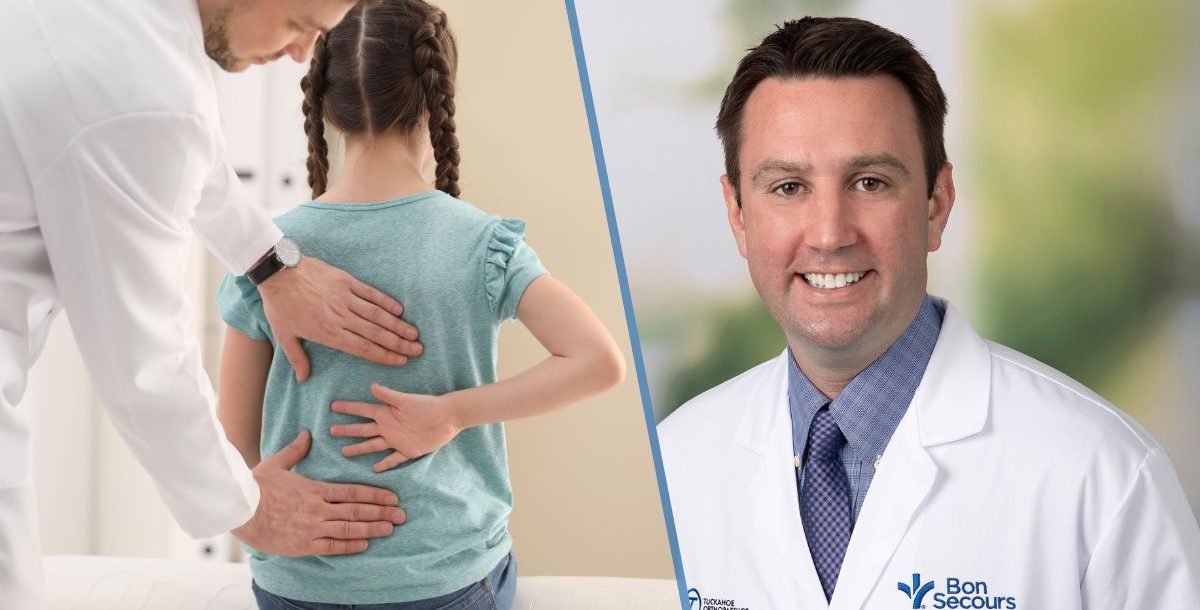The following piece was written by Gregory Hale, MD, an orthopedic surgeon also specializing in pediatric orthopedics at Bon Secours – Tuckahoe Orthopedics.
One of the most common orthopedic issues for youths is back pain in children and adolescents. It’s estimated that more than 50 percent of children experience back pain by age 15.
In adolescents, there is often no obvious cause of back pain, and it can usually be attributed to muscular pain. However, back pain in toddlers and younger children is less commonly muscular, making it crucial to determine the primary cause.
Evaluating back pain in children
If a child experiences back pain, it’s important to make an appointment with your pediatrician or a pediatric orthopedist to determine the cause of the pain. Early and accurate diagnosis is key to effectively treating and managing the issue.
History of the pain
When evaluating back pain in a child, a detailed history of the pain can help identify the cause. Important factors to consider include:
- Whether the pain was associated with an injury
- The character of the pain (sharp, dull, throbbing, etc.)
- The location of the pain
- Activities that exacerbate the pain
- Measures that improve the symptoms
Pain that radiates into the arms or legs, is associated with bowel or bladder dysfunction, worsens with back extension activities, wakes children from sleep at night or affects routine daily activities is less likely to be muscular and warrants further investigation.
Physical exam
A complete physical examination is necessary to evaluate back pain. Key components of the exam include:
- Observing gait and posture
- Assessing pain with certain movements
- Detailed neurologic exam, including assessment of strength and reflexes
This comprehensive exam helps differentiate various causes of back pain in children and adolescents.
Diagnostic imaging
Often, an X-ray of the back is needed to rule out specific conditions. In certain cases, more advanced imaging, such as an MRI, CT scan or bone scan, may be required. Lab work is also necessary for young children and those with concerning findings on their history and physical exams.
Treating back pain in children
Muscular back pain
Fortunately, the most common cause of back pain in children and adolescents is muscular. Issues such as muscle strains, tight hamstrings and other muscular pain from things like physical activity and heavy backpacks are common in children and teens. This type of pain typically responds well to physical therapy, which focuses on:
- Stretching exercises
- Core strengthening
- Local modalities
The vast majority of cases see significant improvement with these measures. If the pain does not respond to physical therapy, further imaging, such as an MRI, may be considered to rule out other potential causes.
Other causes of back pain in children
In rare instances, back pain may be due to other causes and may require more advanced treatment. Some of these conditions include:
- Stress fracture (spondylolysis): This condition is treated with bracing to provide stability and allow healing.
- Disc herniation: If conservative measures fail, an injection may be used to treat the herniation.
- Infection: Antibiotics are used to treat infections causing back pain.
While many of these can be treated without surgery, some conditions and rarer diagnoses may require surgical intervention.
How we can help
Back pain in children and adolescents is a common issue that can significantly impact their daily lives. Early evaluation and accurate diagnosis are crucial for effective treatment.
While most cases of back pain are muscular and respond well to physical therapy, it is important to be vigilant for signs that suggest other underlying causes. Making an appointment with an orthopedic specialist ensures that children receive the appropriate care and interventions needed for their recovery and well-being.
Learn about the orthopedic and sports medicine services we offer at Bon Secours.





